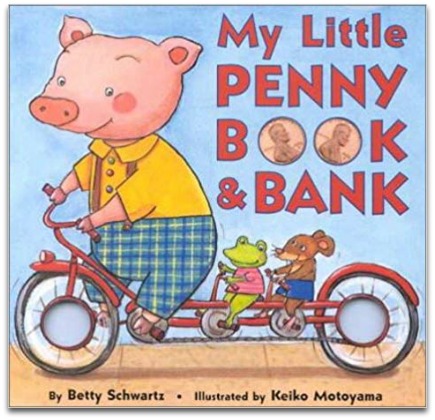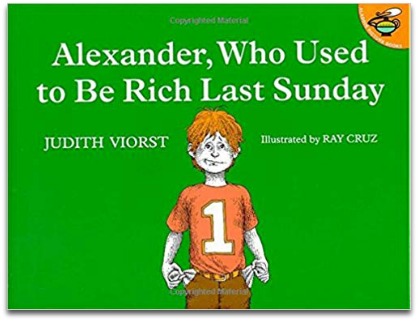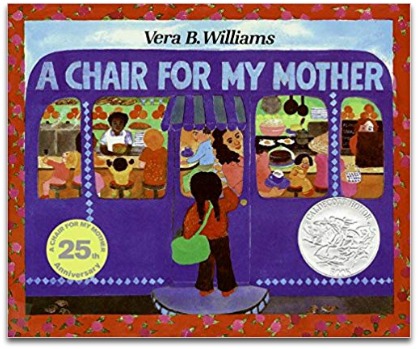 A lot of times, I find myself struggling with the urge to buy that new trendy phone (which I don’t need anyway).
A lot of times, I find myself struggling with the urge to buy that new trendy phone (which I don’t need anyway).
Or eating out at lunch rather than bringing one in from home.
Or buying my kids a toy when they’ve been especially good.
Sound familiar?
Early last week I attended a personal finance seminar that left me thinking. Would I want my kids to manage their finances like I do? How am I doing in keeping up with my saving goals? Am I going to have enough for those big things I need? How about retirement? And what am I teaching my kids about spending versus saving money?
In our daily lives, we are bombarded by multiple messages urging us to spend. From TV commercials to web banner ads, the message is the same: BUY ME!
With consumerism being normalized as a vital part of our daily lives, the time is ripe to teach our kids the value of money as early as their preschool years.
There are many reasons why starting early is important. One, kids absorb knowledge faster at this age. They then form habits that they take with them into their adulthood.
Alfred Adler, in his groundbreaking individual psychology theory, remarks that a child’s attitude towards the problems of life is governed by their childhood experiences. In fact, a Cambridge University study shows that adult money habits are set by age seven.
Secondly, we do not want our children to be part of the negative credit card statistics. In a personal finance survey for college students by Lend EDU, 59% of students surveyed graded themselves below average in successfully managing their finances. 41% of the 455 surveyed saved less than 10% of their monthly income.
Teaching kids the value of money helps with the setting of specific savings goals during their adult life. Without specific goals, saved money can easily be withdrawn for impulse buying and overspending.
Finally, you never know what is going to happen. Recessions happen. Employers go out of business. Cars need repairs. The roof needs replacing.
There are literally a thousand different emergencies that can happen and all of them require money. If you don’t have that rainy day fund saved your credit cards are going to take a hit and then you’re going to have to dig yourself out of the hole.
It is therefore important to teach our kids the value of money. These 4 tips will get you started on the beautiful journey to teaching consumer smarts.
Create a Mental Picture of the Value
 Children have the incredible ability to visualize. If they can create a mental picture of the value of money, they will appreciate the importance of handling money prudently. Some things that parents can do to achieve this are:-
Children have the incredible ability to visualize. If they can create a mental picture of the value of money, they will appreciate the importance of handling money prudently. Some things that parents can do to achieve this are:-
Teach them that money is a medium of exchange.
Play “shop” with your child. Let her collect different things that you frequently buy with them and can easily be counted, for example milk packets or fruits. Give him coins to get back your items.
With older kids, go out for real shopping and let your child handle the payment. Whenever I go shopping with my son, I give him the money and let him handle paying the cashier, receiving the change and making sure it is correct.
This helps him understand that some definite amount of money is always needed to buy some products and and makes money a tangible things instead of an abstract concept.
Attach rewards to efforts.
Create a visual image of the value of saving by attaching rewards to the action.
When my 2-year old daughter wanted an Adora Friends doll, I guided her in saving for it. First we took a picture of the doll online and printed it. We then tied it on a clear jar.
This kept her goals clear in her head and it created a reminder of what she’s even saving for!
Every two days, I gave her $3 to bank towards her dream purchase. In 2 weeks, she had enough to get her favorite doll. As we got the doll, I praised her for achieving her saving objective.
With older kids, instead of this simulated scenario, you can do this with chore or birthday money, as well as allowance. In addition to building a mental experience on the rewards that come with savings, banking the money teaches the value of saving at regular intervals.
Make the saving goals achievable.
Start with short term goals for a specific thing or activity. Children are motivated by what they perceive to be achievable in the short term.
For example, saving for a drawing book could take a week compared with saving for a toy that may take a month or more. Following a long-term saving plan may be difficult and should be left for when she is older.
Older kids can save for something farther off in the future, like prom or a trip to an amusement park or their first car.
Creating a mental picture of the value of money is important. Consumerism works the same way. Beat consumerism at its own game by imparting a visual picture of the value of money to your kids at a tender age.
Get Tactile
 Creating a mental picture is not enough if there is not an action that reinforces this picture. Kids love toys because they help them bring their imagination – their mental pictures – to life.
Creating a mental picture is not enough if there is not an action that reinforces this picture. Kids love toys because they help them bring their imagination – their mental pictures – to life.
In the same way you can make their mental pictures stick by letting your kids feel experience the value of money.
Showing them different denominations.
When you sense they are ready, teach them the difference between different denominations of money. Use size, color, texture, design, and material to explain the difference between a dollar and a penny, and a hundred dollar bill from a one dollar note.
Let them keep the bills and regularly interact with the coins (take caution for younger kids as leaving them with coins will present the risk of swallowing them). Having them learn how to count up their coins and dollars can help them with general math skills, too!
Using an allowance as a money management tool.
Allowances can be a powerful tool to teach your kids money management lessons. It can teach them patience for long-term goals and budgeting their spending in the short-term.
For example, if the child spends an allowance that was budgeted to last for a whole week in a day, do not add any money until week is over. This will teach them that money is not infinite or available on demand, even after they are grown.
Make it fun and inspiring.
Use a clear jar so that your kids can see the progress of their savings. This will inspire your kids to save towards their goals. It will also discourage them from prematurely withdrawing the savings.
Another way to making saving fun is to use a money stealing saving box. A good example of such a box is the panda money box. My kid enjoys it when each coin she places on the box opening is stolen by the panda after pressing the trigger button.
Be a Mirror
 Children mirror behavior more than words. What you do influences your kids more than what you tell them. If you want them to save, show them you are saving. If you want them to budget, regularly ask them to help you with budgeting.
Children mirror behavior more than words. What you do influences your kids more than what you tell them. If you want them to save, show them you are saving. If you want them to budget, regularly ask them to help you with budgeting.
Sharon Letcher, coauthor of Rich Dad, Poor Dad: What the Rich Teach Their Kids about Money advises, “You don’t have to be afraid to share money concepts with your kids – even if you’re having financial challenges.”
She says that sharing personal finance knowledge provides a chance for the whole family to jointly learn new skills.
Bryon Lewis in his article, “5 Things You Must Do To Help Your Children Make Good Financial Decisions,” agrees. “When you talk to your kids about money it removes the mystery and helps them make smart choices. It might initially feel awkward but do not let your uneasiness cause you to miss opportunities to teach important lessons.”
Do you want to be the example of what you want from your kids?
Do not grant their requests for money immediately.
If the request does not arise from a legit need (like materials for school), delay their gratification. Is your kid crying for a toy yet she has a cupboard full of them? Instead of meeting their request now, add it in next month’s budget.
In addition to patience, the delay teaches kids that availability of disposable income does not translate to using it for an unnecessary expenditure.
You might hear some whining, but be firm. It is a natural thing for kids to want something immediately. However, it is not a natural thing to always have disposable cash.
Let them work for the money.
Money is something you earn, not something you are entitled to. Children need to learn money is the reward for hard work. Teaching such a lesson to your kid will make him know the value of money.
My 9-year-old grade-schooler wants a bicycle. And it’s expensive! We decided to split the price of the bicycle between the two of us. He has chores he can do and be paid for to earn his half of the money for the bike.
If he really wants the bicycle, he will find other ways to work harder, earn quicker, and get his bike sooner.
Let them hold a yard sale.
An excellent way of acquiring money is disposing items that you currently don’t need is to hold a yard sale. Help your kids learn this smart money hack by setting up a yard sale for their old toys, books, and clothing.
Show them how to polish and mend items to add value and therefore fetch better price on them.
Gift Them with Stories
A picture speaks a thousand words. A story teaches a thousand lessons.
The power of stories can be harnessed to raise a money smart kid. Are there stories you read or heard that have insightful money lessons? Add a little imagination and tailor it so that the message is relatable to your kids.
When I was a kid, my mum told me a story about a kid, Shaline, who was saving for a toy but saw her friend eating a delicious chocolate. She was torn between staying faithful to her saving goals and satisfying her immediate wants. In the end, she used her savings to buy the chocolate.
When other kids were playing with their toys, Shaline watched with tears and envy. How I sympathized with Shaline, but I decided I wouldn’t want to be in her situation! This story taught me the rewards of sticking to savings goals. A lesson I still carry with me.
 If they are able to read, add books to your stories. Some books are excellent at encouraging the right kind of action. For example, in Betty Schwartz’s book My Little Penny Book and Bank, readers can drop a penny in the slot at the top of each page and watch it travel through die-cut windows in different scenes.
If they are able to read, add books to your stories. Some books are excellent at encouraging the right kind of action. For example, in Betty Schwartz’s book My Little Penny Book and Bank, readers can drop a penny in the slot at the top of each page and watch it travel through die-cut windows in different scenes.
Here are some ideas on financial books to gift your kid:
How the Moonjar Was Made, by Eulalie Scandiuzzi
Good for: Age 2 – 7 years
This book is about how two friends use a special jar to learn how to save, spend and share. It has a website that sells a classic moonjar.
 Alexander, Who Used to Be Rich Last Sunday, by Judith Viorst
Alexander, Who Used to Be Rich Last Sunday, by Judith Viorst
Good for: Ages 4 – 8 years
Alexander receives a dollar from his grandparents making him feel rich. Rather than saving, he spends the money is fast. The book uses engaging illustrations and simple addition and subtraction to encourage kids establish a saving culture.
 A Chair for My Mother, by Vera B. Williams
A Chair for My Mother, by Vera B. Williams
Good for: Age 4 – 8 years
Are you looking to teach your kids the art of saving, budgeting and working in order to afford a gift for someone special? This is the book. Well illustrated, Vera tells of a tragedy where a girl, her mother and grandma lose everything in a fire. They move in a smaller house. The girl and grandma take the reader on a journey of budgeting and saving to buy a chair to the hardworking mum.
A Dollar for Penny, by Julie Glass
Good for: Age 4 – 8 years
Using enjoyable rhymes and beautiful illustrations, Julie teaches about various coin values and basic mathematical concepts in the story of how Penny, got to a dollar.
The Kids’ Money Book: Earning, Saving, Spending, Investing, Donating, by Jamie Kyle McGillian
Good for: Age 8 – 12 years
This is a great book for teaching kids the difference between needs and wants, getting the most from an allowance, becoming an entrepreneur, and donating.
Growing Money: A Complete Investing Guide for Kids, by Gail Karlitz and Debbie Honig
Good for: Age 8 – 12 years
This complete guide explains in kid-friendly terms all about savings accounts, bonds, stocks, and mutual funds!
Why Didn’t They Teach Me This in School?: 99 Personal Money Management Principles to Live, by Cary Siegel
Good for: Age 13+ years
While this book is geared for kids heading out for college with topics such as budgeting, housing, spending, debit, credit and investing, it would still work great with high-schoolers.
The Motley Fool Investment Guide for Teens: 8 Steps to Having More Money Than Your Parents Ever Dreamed Of by David Gardner and Tom Gardner
Good for: Age 13+ years
This smart and savvy book sets up older teens with the best advice on investing.
In conclusion…
Just like many things parenting, raising a kid in a way they value money is not a walk in the park. You will make mistakes. There’s no guarantee that your efforts will be fruitful. In fact, there will be many instances where your expectations will be disappointed. However, these early lessons will stay with them. One day, you may be surprised to learn that the saving jar you gifted them 10 years ago is what currently inspires their saving prowess.
The 2-Minute Action Plan for Fine Parents
The first step in raising a money-smart child is to understand that kids learn in a different way. However, kids learn their most important life lessons by observing their parents.
Check your financial habits. Are you saving, investing or managing debts the way you want your kids to? What can you do about it?
When is the next shopping date? How can you get your kids involved? Can you take your kid and have them buy something like a chocolate or an apple and pay for it?
Journal how you are doing financially. You can add tips, listed above, you plan to use to make your kids money smart.
Ongoing Action Plan for Fine Parents
Plan to include your kids in your budget the next time you do it.
Make it a habit to take your kids shopping and let them pay for small purchases to understand the value of money.
Work with your kids in developing family budget and saving goals for them and you.
Regularly expose your kids to events that will help them learn more about financial prudence for example financial education forums for your teen.
Surprise your kids once in a while by putting in money in their savings jar without their knowledge. When they open their jars, use the extra money mystery to explain the concept of interest.
Sure,it’s advantageous since
one will be a notch higher.
Thank you so much BLL.
Interesting and helpful ideas that parents can refer through. Having the right knowledge on money management is an advantage.
This article was packed full of good advice. The being a mirror part is sometimes hard for me. I worry about making them too aware of money constraints. I want them to save and be careful with their money but not to feel like they can’t afford, have, or deserve the things they want. So far they are doing great but I always feel like it is a balancing act!
Thank you, Scarlet, for reaching out.
For sure, it is about creating a balance. You can always have ways to work around the issue of money constraints with explicitly letting them think they can’t afford things.
For instance, you can establish a culture where you buy gifts for the children as a reward for good behavior or effort towards improvement on various tasks. This way, your kids will be aware that they will automatically get anything they want.
Again instill some discipline in them as they will always take care of their ‘hard earned’ gifts or money.
A great guide for teaching parents and kids on money . Thank you for penning this article .
Great! You are welcome Revathi.